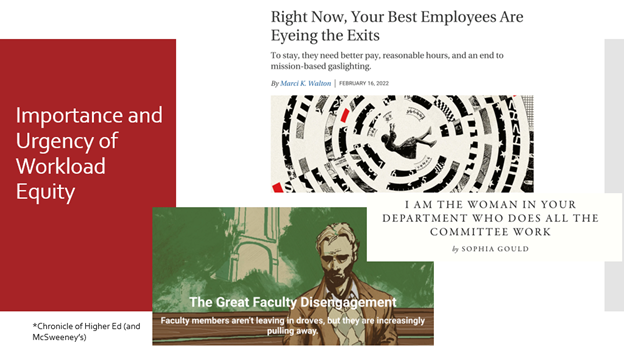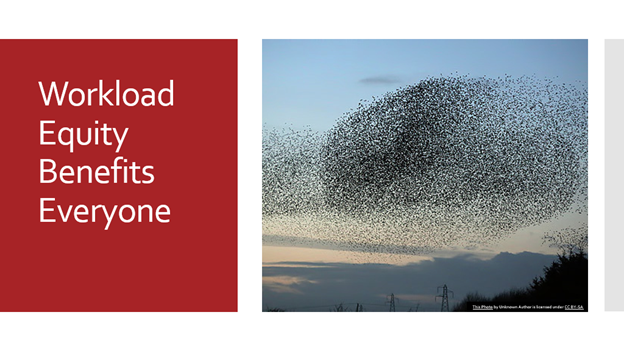By: Kate Willink, Vice Provost, Faculty Affairs
Workload equity is an intentional practice created by academic leaders, departments, and faculty members who take action to create better, fairer, equity-minded workloads. Policies and practices can be put in place to “script,” or guide, faculty and their institutions toward more equitable outcomes, especially for women faculty members and faculty members from historically minoritized identity groups. Workload equity also requires academic leaders and departments to be more accountable for fair divisions of labor. Diversity work, mentoring, teaching, and service are vital to the functioning of the university. Workload equity elevates these collective enterprises and increases faculty productivity, satisfaction, and retention.
We all work hard to recruit, welcome, and retain faculty. The way we distribute the collective work in departments and programs—from graduate student advising, to teaching capstone classes for undergraduates, to a host of departmental, unit, and university service—impacts how each faculty member feels valued and rewarded and an overall sense of equitable distribution across the collective. We know from our COACHE faculty data, gathered pre-pandemic, that DU faculty feel the nature of their work in relation to service and teaching is burdensome. And we know from research that faculty leave institutions not primarily because of salary but because of their departmental day-to-day and how they feel (or don’t) that they belong and are valued for the work they do.
Workload equity is different from faculty workload–the amount of work faculty have to do. Workload equity is not the same as pay equity. Workload, workload equity, and pay equity are all important and interrelated . Our progress in workload equity is not linear but iterative, not consecutive but interdynamic, not competitive but synergistic.
In sum, by becoming clearer in our departments and programs about the distribution of our collective workload—making all work visible and valued—we can also gain a clearer understanding of the amount of work being done. And this transparency, clarity, credit, norms, context and accountability are vital starting points for departmental/program climate where faculty thrive, want to stay, and feel valued for their contributions.





